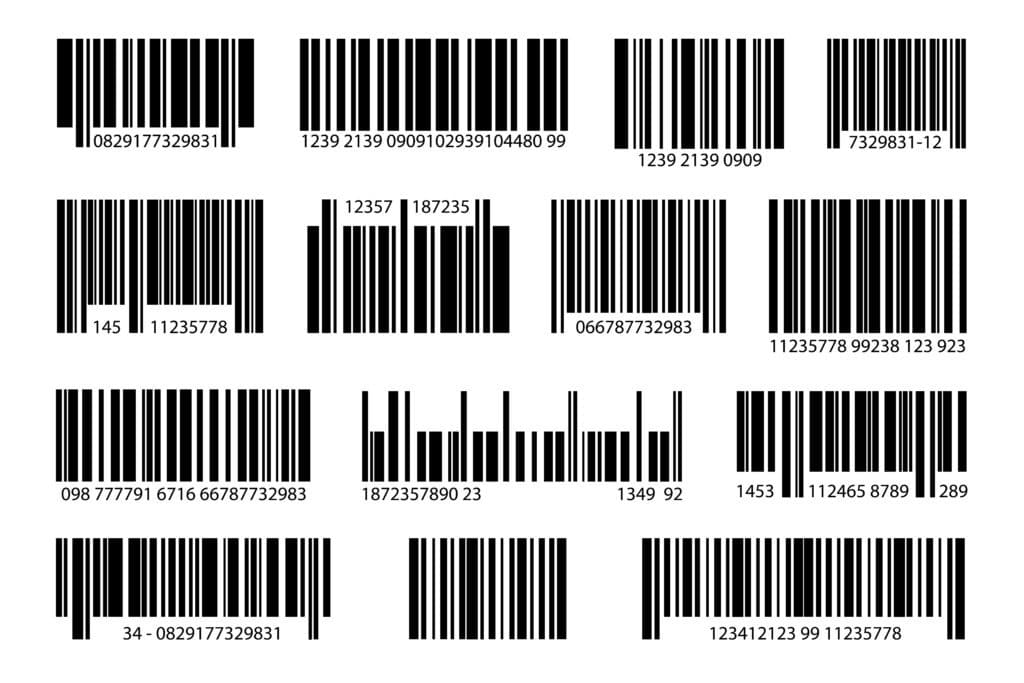Item coding facilitates effective inventory management in storage facilities, which benefits all activities carried out in the warehouse. As a result, each product needs to be identified when it is received.
The act of formally identifying the products with a code or sign is known as item coding. This code is connected to an electronic label attached to the product. Barcodes and RFID tags are the most common labels used in logistics.
This blog discusses the codification and the benefits of accurately labeling every item in the warehouse. It’ll also explain the tools and standards used for coding, focusing on WMSs.

What does storage installation item coding entail?
Item Coding is the process of giving a product a code. The SKU, ingredients, level of hazard, the date the item arrived in the warehouse, packaging, and expiration date are just a few of the key details that may be seen using this code.
Coding’s goal is to make products identifiable in a singular way (two things cannot share the same code). WMSs (warehouse management systems) are essential to this procedure. The WMS is responsible for creating the codes for each item, allocating locations for the products within the system, and keeping track of the many stages the goods go through (in other words, it manages their traceability).
Today’s trends, such as lightning-fast deliveries and the storage of little items, have complicated warehouse operations. Consequently, it is essential to establish thorough control of the things and register all their movements to analyze and optimize goods’ flows precisely. Operators can discover and send products more quickly and accurately with coding and WMS.
Benefits of Item coding and labeling the products
All parts of the supply chain, from the manufacturer to the final consumer, can greatly benefit from coding. It enables firms to discover rapidly, ship products, and learn the condition of their inventory. On the other hand, consumers gain from the efficient logistical methods that businesses use. These ensure that items are available when clients go to make purchases and that they will swiftly and accurately receive their online orders.
Therefore, coding goods and making sure they are appropriately identified has the following advantages:
Agile goods receipts: All products that arrive at the installation should be labeled to be quickly identified. The item is immediately entered into the system when a radiofrequency terminal reads its label.
Traceability: It is simple to keep track of the many stages the commodities travel through now that all the products have been identified.
Real-time inventory control: The precise quantity of SKUs in the warehouse may always be known.
More in-depth business knowledge: The more information you have, the simpler it will be to decide how to optimize operations and anticipate changing client needs. Item coding enables the analysis of a wide range of factors, including the quantity and date on which each product is sold, and the amount of space required to store it in the installation.
Efficient order prep: Picking is a warehousing task requiring more time and materials. Speed is ensured by having all goods controlled and recognized because the WMS knows the precise location of every SKU and gives operators instructions on where to find it.
Error-free processes: By preventing deviations and errors in all kinds of activities and coding the items, you may improve logistics service, boost customer satisfaction, and save a ton of money.
Standards and methods for item coding
There are different ways to code warehouse products depending on the symbols used. The system that best suits a company is chosen. The majority are:
Numeric coding – Numbers only
Alphabetic coding – Letters only
Alphanumeric coding – Both numbers and signs
If a business chooses to implement its coding system, it should be simple to use for all staff members. Codes should be brief and consistent in length to make them simple to understand and write.
The next step is to label the goods after the type of item coding has been decided. The barcode, the most widely used method of representing a code in a warehouse, is useful in this situation. This approach is rapid and accurate because the laser scanner scans the bars and translates them into their alphabetic equivalent.
Although there are more recent options like QR codes and RFID tags, it isn’t easy to surpass the efficiency and simplicity of barcodes. They are, therefore, commonplace in the logistics industry. Barcodes can also be applied internally and externally. However, several norms and standards should be adopted among other enterprises outside the corporation.
The International Article Numbering Association, today known as GS1, has created a coding system that ensures the distinct identification of goods on a global scale.
Let’s examine the most prevalent codes that this association has established:
EAN-13: Most used to identify things displayed at sale points. Its 13 numerical digits, divided into four groups according to the manufacturer, country of origin, product code, and control number, are why it was given this name. Each state’s competent body provides the manufacturer code. According to the International Barcodes Network, the US has historically utilized UPC-A format barcodes, whereas the rest of the world has used EAN-13 format barcodes. Nowadays, most stores throughout the globe accept barcodes in both formats. However, certain older devices can only support one or the other. Therefore, the UPC-A type barcodes are recommended if your product is sold in the US. However, if your product is foreign or sold in a place other than the United States, an EAN-13 Barcode is recommended.
EAN-128 or GS1-128: EAN-13 was developed to facilitate additional information, such as a product’s weight, manufacturing date, expiry date, batch number, series number, end destination, etc. It serves as the logistics industry’s foundational code.
SSCC (Serial Shipping Container Code): Implemented to manage and track orders. For assuring effective deliveries, this code is especially helpful.
ERPs and WMSs
Applications for product coding software, mainly ERPs and WMSs, are the sole means to code things in the warehouse precisely. The ERP automatically gives each item in the company’s catalog a code. The code must adhere to the company’s chosen item coding standards (UPC-A, EAN-13, EAN-128, RFID tags, etc.).
The WMS, by Odoo, can also produce codes. For example, this can be done for objects uncoded when they arrived at the warehouse and for new items produced during the installation, like kits. In these situations, operators must individually identify each item and manually enter it into the system, indicating its features so that the WMS can recognize it and generate the proper codes.
By scanning a code, workers may get all the details about an item, including its weight, volume, storage considerations, and turnover.
The ERP has masters, or databases, which include all the rules and information needed to conduct business operations (including, but not limited to, transportation companies, suppliers, and, of course, the item master). Since the item master contains all the information on the items, it is particularly important in logistics and coding.
To effectively manage the items in the warehouse, the WMS incorporates all the item-master data. The goods’ attributes will determine how the various operations are carried out. Choose the appropriate boxes and packaging; for instance, choosing requires knowledge about the item’s volume.
The WMS can organize the products in the warehouse according to criteria like their nature, volume, weight, status, packaging, and attributes (expiration date, quality, color, etc.), using the data from the code and the item master as the basis for the organization.
The WMS should be created to create a commodities slotting strategy based on the preferences and requirements of the firm. All tasks occurring in the installation, especially order preparation, will benefit from proper product distribution.
In a nutshell
The main objective of the item coding procedure is to make it easier to locate items in the warehouse and provide complete traceability. Coding is the definition of organization and management. Having all the objects identified results in considerably better storage management. Traceability, which tracks each step a product takes along the supply chain, is the most immediately apparent benefit.
Without a doubt, a WMS is essential for knowing the product inventory and identifying the products. A WMS system can control stock and all moves made within the installation. Coordination between the ERP and WMS is necessary to achieve this (the former manages the item master with the data on each product, while the latter scans the product code and places the goods in the warehouse).
Identifying every product as it enters the installation is crucial to slotting products appropriately based on their attributes. This is where the rules for distributing items across the warehouse come into play, as they are included in the warehouse management system (WMS). With the WMS, businesses can constantly keep track of each item’s precise position in a unique manner. And remember, if you have any questions, don’t hesitate to give us a call.




